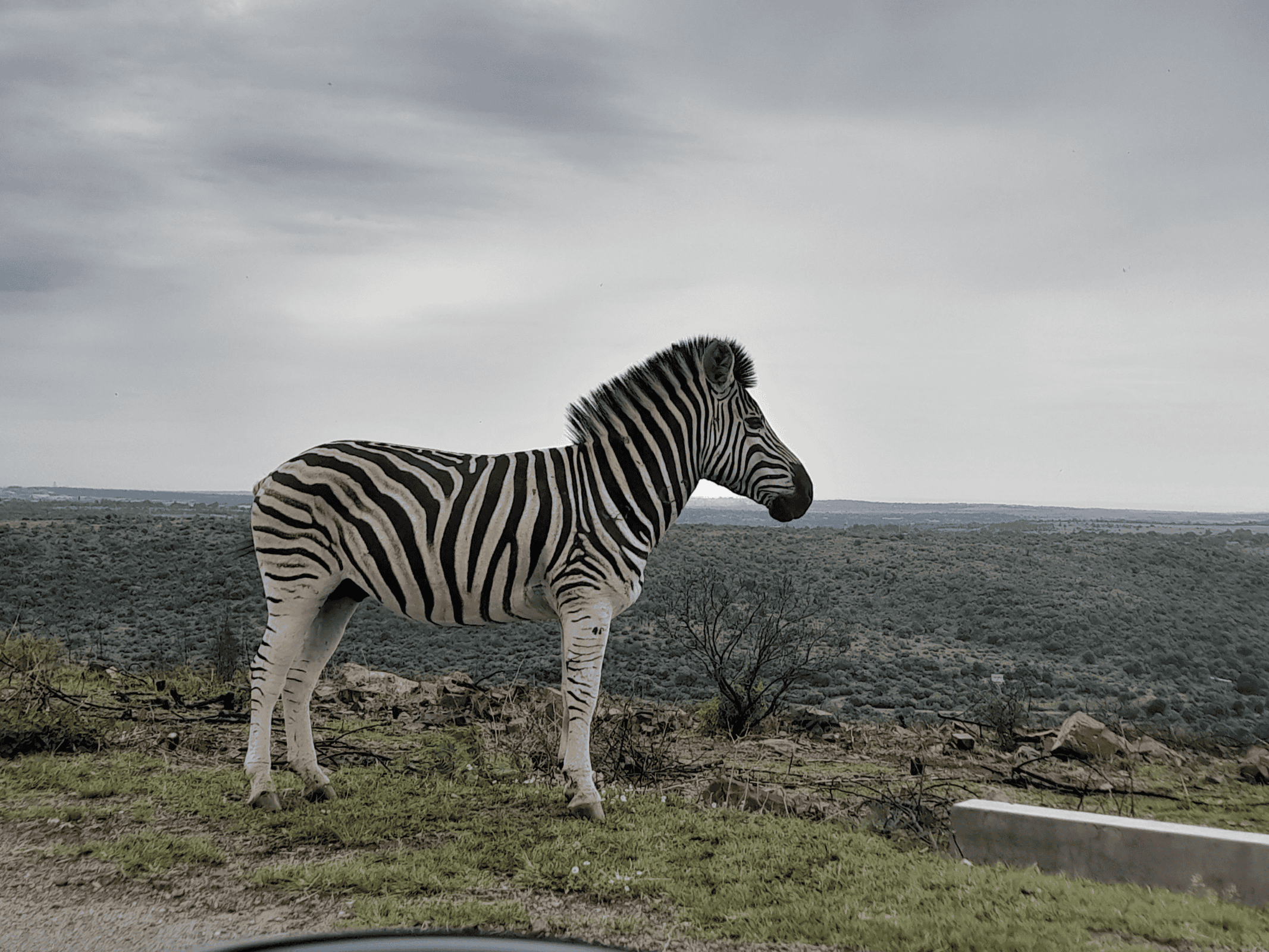AfriForum’s head office is located near several nature conservation areas where zebras are found. Sometimes we are fortunate enough to see these animals on a normal working day!
In the pioneer years in Southern Africa, the Zeederberg stagecoach company (founded in 1887) even tried to teach them to pull coaches. The reason for this was that animals such as horses, mules and oxen are particularly susceptible to livestock diseases that the Zeederberg brothers believed the zebras would be immune to. Unfortunately, the experiment did not succeed – the zebras simply could not be tamed.
Fifteen interesting facts about zebras:
1. There are 11 zebra species and subspecies. This article provides a nice breakdown of the distinctions between them, as well as clear photos (https://wildlifeinformer.com/types-of-zebras/).
2. Each zebra’s stripe patterns are unique and can be used to distinguish individual animals from each other.
3. In 2019, a foal was born in Kenya’s Masai Mara Nature Reserve that has spots instead of stripes. The foal was named Tira and was seen until 2021. More recent information about him could not be found.
4. Zebras’ skins are grey-black, with white and black or brown hair forming the stripes.
5. The stripes camouflage them, protect them from the sun and keep bugs away.
6. They are one of very few animals that can distinguish between colours. They seem to be able to see all colours except orange.
7. They communicate with sounds and smells, but also with facial expressions and the position of their ears.
8. They graze together in family groups that can consist of up to 1 000 animals.
9. Like their close relatives, horses, they are called stallions, mares and foals.
10. They can kick with an impact of more than 1 300 kilograms – this is hard enough to kill an adult lion with a single kick.
11. They usually stand and sleep.
12. Their top speed is about 65 kilometres per hour.
13. Foals can walk within 15 minutes after birth.
14. Mountain zebras’ hooves are pointed. This helps them to be able to climb in steep areas.
15. They can handle droughts well. If water is scarce, they can survive by drinking water once in five days only.




















